We live in a 24/7 world. What does this mean for the future of workplace design? Veteran workplace interior designer Angela Ferguson shares her observations.
It’s now 2019, the year in which the 1982 movie Bladerunner was set. And just like Bladerunner, our world is dominated – if not ruled at times – by screens and technology. This dependence on technology has driven us very quickly towards a culture that runs 24 hours a day, 7 days a week, almost every day of the year.
Life is fast-paced and demanding. We are always connected, always available, and for many of us, always working. Technology has given us the mobility and freedom to work anywhere, at any time and with greater autonomy than ever before. If this is the status quo, then what does that mean for the physical workplace, which up until now has been essential for us to do our work?
Many would argue that the physical workplace has lost both its value and its meaning – that a physical office location to work in is no longer necessary, that all we need for our occupational endeavours is a mobile device and Wi-Fi. Many would also argue that this ‘untethering’ is an appropriate vision for the future. Several years ago this notion was of some concern to me, mostly for selfish reasons; as an interior designer specialising in workplace design, I was worried I would soon be out of a career!
Instead, I have found the opposite to be true. In a 24/7 world that is driven by technology and virtual connectivity, the workplaces we inhabit are more influential than ever before. In the research we do at Futurespace, we find workplaces are occupied for at least two to three full days a week on average, across the Monday to Friday working week. While this may not seem like a lot, it is also important to note that the Australian working week is among the longest in the world.
Just because we can work anywhere at any time, doesn’t mean that we should. We need boundaries around the discipline of ‘work’ and a designated place to work that supports this. It also stands to reason that the places we dedicate to work should evolve to have a more exciting and profound role when it comes to their influence on us; both professionally and personally.
The most successful workplaces in the 21st century are high-performing sanctuaries. They are more than just a place that looks cool or is Instagrammable. They support us in achieving our work and life goals, and we feel better having spent time in them. The best workplaces of 2019 and beyond will be places where people feel inspired and motivated. They must allow us to connect with our colleagues face-to-face because nothing will ever replace the need or power of human interaction. Ultimately, the modern workplace needs to be able to be navigated intuitively, while creating holistic wellness, social connection and engagement. They must support, nurture, stimulate and foster creativity. When all of these things are combined in the workplace, users can be influenced to be the very best version of themselves.
Our relationship with the modern office environment is more important than ever as much of our work today relies on technology and human interactions. The workplace has evolved to a more meaningful and people-centred typology. Now more than ever, it is critical that our workplaces are designed with intelligence and a thorough understanding of their performance. Because in 2019 we go to a physical workplace because we want to, not because we have to.
Want more workplace design inspiration? Take a look through our archives. And keep an eye out for the next issue of Indesign magazine due out in February which will focus on workplaces.
–
Be on top of the latest thinking in the design sector, sign up for our newsletter.
INDESIGN is on instagram
Follow @indesignlive
A searchable and comprehensive guide for specifying leading products and their suppliers
Keep up to date with the latest and greatest from our industry BFF's!

For Aidan Mawhinney, the secret ingredient to Living Edge’s success “comes down to people, product and place.” As the brand celebrates a significant 25-year milestone, it’s that commitment to authentic, sustainable design – and the people behind it all – that continues to anchor its legacy.
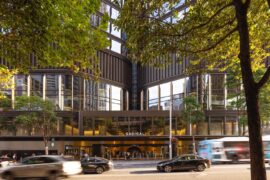
Rising above the new Sydney Metro Gadigal Station on Pitt Street, Investa’s Parkline Place is redefining the office property aesthetic.
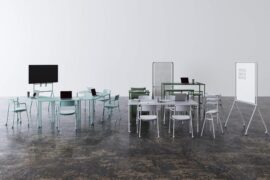
Welcomed to the Australian design scene in 2024, Kokuyo is set to redefine collaboration, bringing its unique blend of colour and function to individuals and corporations, designed to be used Any Way!
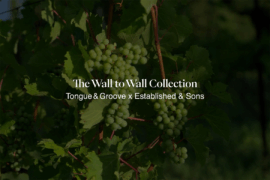
London-based design duo Raw Edges have joined forces with Established & Sons and Tongue & Groove to introduce Wall to Wall – a hand-stained, “living collection” that transforms parquet flooring into a canvas of colour, pattern, and possibility.
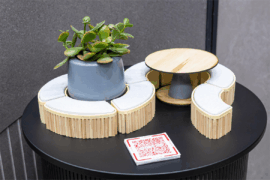
From the spark of an idea on the page to the launch of new pieces in a showroom is a journey every aspiring industrial and furnishing designer imagines making.
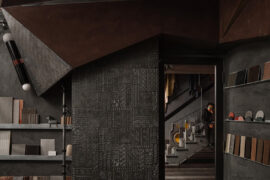
Bangalore studio Multitude of Sins elevates true leftovers — not surplus — into a richly layered workspace where waste materials become narrative, structure and sculptural expression.
The internet never sleeps! Here's the stuff you might have missed

Central Station by Woods Bagot in collaboration with John McAslan + Partners has been named one of two joint winners of The Building category at the INDE.Awards 2025. Recognised alongside BVN’s Sirius Redevelopment, the project redefines Sydney’s historic transport hub through a transformative design that connects heritage with the demands of a modern, growing city.
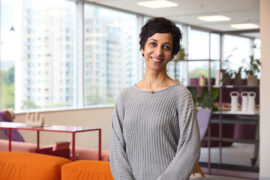
With Steelcase having reopened its refreshed WorkLife Showroom in Singapore this year, we spoke to Navedita Shergill about some key workplace macro shifts identified in their research.

The final instalment in our three-part series on collaborations between the world’s best designers and the American Hardwood Export Council.

Recognised as a winner at the INDE.Awards 2025, Barton Taylor has received The Photographer – Residential accolade. His photographic work on Cake House captures the soul of a coastal icon reimagined, blending light, texture and atmosphere into a compelling visual narrative.